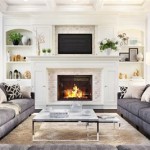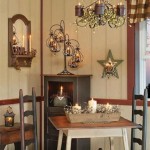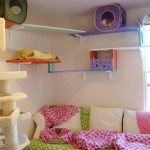Living Room Accessories Decorating Ideas
The living room serves as a central hub within a home—a place for relaxation, entertainment, and social interaction. Consequently, its design and aesthetic significantly impact the overall feel of the residence. Accessories play a pivotal role in shaping the character of the living room, contributing to both its visual appeal and functional utility. Thoughtful selection and arrangement of accessories can transform a mundane space into a personalized and inviting environment.
Living room accessories encompass a broad range of items, from tangible objects like cushions and throws to more structural elements like lighting fixtures and window treatments. The key to effective accessorizing lies in establishing a cohesive theme and color palette, ensuring that each item complements the existing décor while reflecting the individual style of the homeowner. Consideration should be given to the size and scale of the room, as well as the function it is designed to serve.
Achieving a well-decorated living room is not simply about filling the space with objects; it is about creating a balanced and harmonious environment. This involves careful consideration of texture, pattern, color, and arrangement. The following points explore key aspects of living room accessory decorating, offering practical advice and inspiration for achieving a stylish and comfortable living space.
Integrating Textiles for Comfort and Style
Textiles are fundamental in defining the comfort and aesthetic of a living room. They offer an effective means of introducing color, texture, and pattern, contributing to the overall visual interest. Cushions and throws are particularly versatile accessories, allowing for easy and affordable updates to the room's décor.
Cushions can be strategically placed on sofas and armchairs to enhance comfort and visual appeal. Varying the size, shape, and fabric of the cushions can create a layered and dynamic look. Consider incorporating cushions with different textures, such as velvet, linen, or faux fur, to add depth and tactile interest. Patterns, such as geometric prints or floral motifs, can introduce a focal point and complement the existing décor. The color palette should align with the overall theme of the room, with contrasting colors used sparingly to create visual impact.
Throws serve both a functional and decorative purpose. They can be draped over sofas or armchairs for added warmth and comfort, or folded and placed in a basket for convenient access. Similar to cushions, throws offer an opportunity to introduce texture and color. Chunky knit throws provide a cozy and inviting feel, while lightweight cotton throws are ideal for warmer months. Patterns and prints can also be incorporated to add visual interest. The key is to choose throws that complement the existing cushions and other textiles in the room.
Rugs are another essential textile element in a living room. They define the seating area and provide a foundation for the overall décor. The size, shape, and style of the rug should be carefully considered in relation to the size of the room and the arrangement of the furniture. A large rug that extends under the front legs of the sofas and armchairs can create a cohesive and grounded feel. Smaller rugs can be used to define specific areas, such as a reading nook or a fireplace. The color and pattern of the rug should complement the other textiles in the room, creating a harmonious and balanced look.
Curtains and window treatments are also vital for controlling light, adding privacy, and enhancing the overall aesthetic of the living room. The choice of curtains will depend on the desired level of light control and privacy. Sheer curtains allow natural light to filter through while providing a degree of privacy. Blackout curtains block out light completely, creating a dark and cozy atmosphere. The color and pattern of the curtains should complement the other textiles in the room, creating a cohesive and balanced look. Consider the length of the curtains, ensuring they either reach the floor or slightly puddle for a more luxurious feel. Blinds and shades offer alternative window treatment options, providing a more streamlined and modern look.
Incorporating Lighting for Ambiance and Functionality
Lighting plays a crucial role in setting the mood and enhancing the functionality of a living room. A well-lit room feels inviting and comfortable, while also providing adequate illumination for various activities. A layered lighting approach, incorporating a combination of ambient, task, and accent lighting, is essential for achieving optimal results.
Ambient lighting provides overall illumination to the room. This can be achieved through the use of ceiling fixtures, such as chandeliers or pendant lights. The style of the ambient lighting fixture should complement the overall décor of the room. A chandelier can add a touch of elegance and sophistication, while a pendant light can provide a more modern and minimalist look. The brightness of the ambient lighting should be adjustable, allowing for different moods and activities.
Task lighting provides focused illumination for specific activities, such as reading or working. This can be achieved through the use of table lamps or floor lamps. Table lamps are ideal for placing on side tables or consoles, providing a soft and warm light for reading or relaxing. Floor lamps offer a more versatile option, allowing for adjustable height and direction. The style of the task lighting fixture should complement the overall décor of the room. Consider using lamps with adjustable arms or shades to direct the light where it is needed most.
Accent lighting highlights specific features of the room, such as artwork or architectural details. This can be achieved through the use of spotlights, wall sconces, or picture lights. Spotlights can be used to highlight artwork or architectural features, creating visual interest and drama. Wall sconces provide a soft and diffused light, adding warmth and ambiance to the room. Picture lights are specifically designed to illuminate artwork, ensuring that it is properly lit and displayed. The placement of accent lighting should be strategic, highlighting the most important features of the room.
The type of light bulb used can also significantly impact the overall ambiance of the room. Warm white light bulbs create a cozy and inviting atmosphere, while cool white light bulbs provide a more bright and energizing feel. LED light bulbs are an energy-efficient and long-lasting option, offering a variety of color temperatures and brightness levels. Consider using dimmer switches to adjust the brightness of the lights, allowing for different moods and activities.
In addition to functional lighting, decorative lighting can also be used to enhance the aesthetic of the living room. String lights, candles, and lanterns can add a touch of whimsy and romance to the space. String lights can be draped around furniture or windows, creating a festive and inviting atmosphere. Candles provide a soft and warm glow, adding a touch of elegance and relaxation. Lanterns can be placed on the floor or on a table, creating a focal point and adding visual interest. The key is to use decorative lighting sparingly, ensuring that it complements the overall décor of the room.
Curating Decorative Objects and Personal Touches
Decorative objects and personal touches are essential for adding character and personality to a living room. These items reflect the individual style of the homeowner and create a sense of warmth and authenticity. The key is to curate a collection of objects that are meaningful and visually appealing, arranging them in a way that is both stylish and functional.
Artwork is a powerful way to express personal taste and create a focal point in the living room. The choice of artwork will depend on personal preferences, but it should complement the overall décor of the room. Large statement pieces can create a dramatic impact, while smaller pieces can be grouped together to create a gallery wall. Consider the color palette and style of the artwork, ensuring that it aligns with the overall theme of the room. The placement of artwork is also important. Hang artwork at eye level for optimal viewing. Ensure the lighting is adequate to showcase the artwork effectively.
Greenery adds life and vibrancy to a living room. Plants not only enhance the aesthetic of the space but also improve air quality. Choose plants that are suitable for the lighting conditions in the room. Low-light plants, such as snake plants or ZZ plants, are ideal for rooms with limited natural light. Plants that thrive in bright light, such as succulents or cacti, are suitable for rooms with ample sunlight. Consider the size and shape of the plants, ensuring that they complement the other décor in the room. Place plants in decorative pots or baskets to add visual interest. Artificial plants are also an option for those who prefer a low-maintenance alternative.
Books are a great way to add personality and intellectual appeal to a living room. Bookshelves can be used to display books, as well as other decorative objects. Arrange books by color or size to create a visually appealing display. Incorporate other decorative objects, such as vases, sculptures, or picture frames, to add visual interest. Coffee table books can also be used to add personality and style to a living room. Choose books that are visually appealing and reflect personal interests.
Mirrors are a versatile accessory that can be used to enhance the light and space in a living room. Mirrors reflect light, making the room appear brighter and more spacious. They can also be used to create a focal point or to add visual interest. Place a large mirror on a wall to create a dramatic impact. Group smaller mirrors together to create a gallery wall. Consider the shape and style of the mirrors, ensuring that they complement the other décor in the room.
Personal mementos, such as photographs, souvenirs, and family heirlooms, are essential for adding character and warmth to a living room. Display these items in a way that is both stylish and meaningful. Frame photographs and display them on a wall or on a table. Arrange souvenirs and family heirlooms on shelves or in display cases. These items tell a story and reflect the individuality of the homeowner.
Vases and other decorative containers can be used to add visual interest and texture to a living room. Fill vases with fresh flowers, dried flowers, or branches to add a touch of nature to the space. Choose vases that complement the overall décor of the room. Consider the shape, size, and material of the vases. Other decorative containers, such as bowls, trays, and baskets, can be used to display objects or to add texture to the room. They can also be functional storage solutions.
Ultimately, the selection and arrangement of living room accessories should reflect the individual style and preferences of the homeowner. The goal is to create a space that is both stylish and comfortable, a place where one can relax, entertain, and feel at home.

75 Beautiful Living Room Ideas For Decorating Inspiration

Living Room Decor Ideas For Your Home Design Cafe

10 Budget Friendly Living Room Accessories Ideas For Home

75 Beautiful Living Room Ideas For Decorating Inspiration

Spring Living Room Decorating Tips Citrineliving

60 Living Room Ideas For Your Home Planner 5d
.jpg?strip=all)
Living Room Décor Ideas Dream Green Diy

Looking For Ideas To Decorate Your Living Room Designcafe

90 Modern Living Room Ideas For The Ultimate Hangout Spot

75 Beautiful Living Room Ideas For Decorating Inspiration







